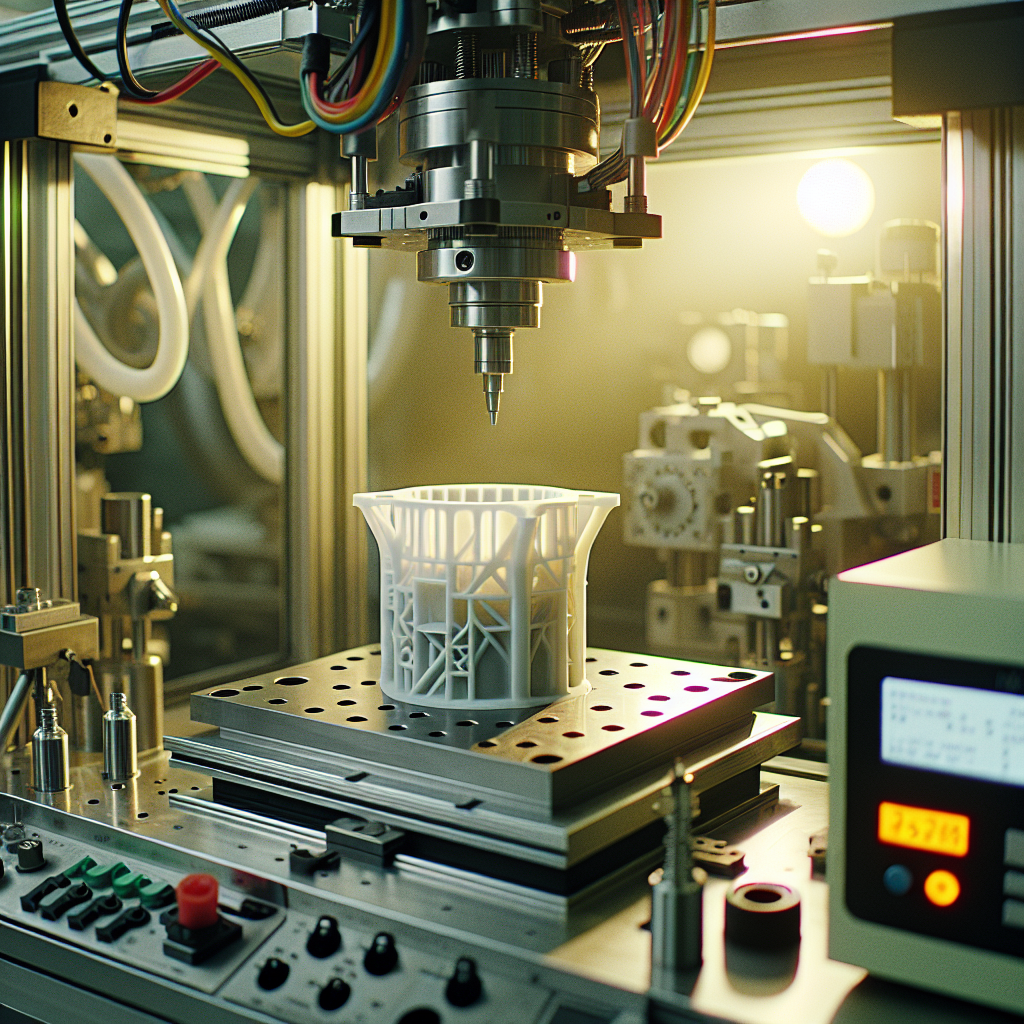The greatest industry in the American economy is manufacturing. It is fundamental to the prosperity of our nation. As a business owner you have multiple ways in which you can carry out your production. One of the popular techniques of manufacturing is lean manufacturing.

Wondering what that is? Worry not because in this article we will take you through the depths of lean manufacturing. So, let’s get started!
This article covers the following:
- What is lean manufacturing?
- How does lean manufacturing work?
- What are the benefits of lean manufacturing?
- What are the challenges of lean manufacturing?
- What are the strategies for overcoming lean manufacturing challenges?
- Measuring Success with Lean Manufacturing
- How lean manufacturing can help your business?
- How can Deskera assist you?
- Key Takeaways from lean manufacturing
What is Lean Inventory?
Lean manufacturing is a production approach that emphasizes eliminating waste and improving efficiency. It is a system of production that focuses on reducing the number of resources and time used in order to produce a product or service. It is a continuous flow process that focuses on the elimination of waste in order to maximize value for customers and minimize cost.
Lean manufacturing is based on the idea of continuous improvement and Six Sigma principles. The goal of lean manufacturing is to identify and eliminate any unnecessary steps or processes in the production process that do not add value to the customer.
The purpose of lean manufacturing is to reduce costs, eliminate waste, and streamline processes while still delivering the best quality products and services. Lean manufacturing utilizes a variety of tools and techniques to achieve its goals.
These tools and techniques include value stream mapping, which is used to identify areas of waste in the production process, and Kaizen events, which are used to brainstorm and identify ways to improve the production process.
Tools such as Deskera, which is used to organize the workplace and standardize production processes, and improves supply chain management, are also employed. The key to the successful implementation of lean manufacturing is to ensure that all employees are properly trained and understand the principles of the system.
How Does Lean Manufacturing Work?
Lean manufacturing is a production process designed to reduce waste and streamline the production process. It has become increasingly popular in recent years as companies seek to become more efficient and profitable.

Lean manufacturing is based on an approach that focuses on the elimination of waste and non-value-added activities in order to maximize productivity and quality.
Analyze the Process
The Lean manufacturing process starts with a thorough analysis of the process to identify any potential areas of improvement. This analysis includes looking at the inputs, outputs, processes, and resources that are used in the manufacturing process. This analysis helps to identify any areas of waste or inefficiency.
Develop an Action Plan
Once the areas of improvement are identified, the team can then work together to develop an action plan that addresses the issues. This action plan may include changes in the production process, the introduction of new technology, or changes in the way resources are allocated.
Implement Any Changes Identified
The next step in the lean manufacturing process is to implement the changes identified during the analysis. This may involve the introduction of new technology, the reorganization of production lines or changes in the way resources are allocated. The changes should be implemented in a way that maximizes the efficiency of the production process and minimizes waste.
Monitor the Process
The third step in the process is to monitor and analyze the performance of the production processes. This involves tracking the inputs, outputs, and resources that are used in the process.
The team should also look for any potential areas of improvement. This may involve making changes to the production process, introducing new technology, or looking for opportunities to streamline the process.
Make Improvements
The fourth step in the lean manufacturing process is to use the data collected during the monitoring and analysis phase to improve the production process. This may involve making changes to the production process, introducing new technology, or changing the way resources are allocated.
The team should also look for ways to reduce waste and increase efficiency. This may involve introducing new processes or technologies or making changes to the way resources are allocated.
Evaluation of the Process
The fifth and final step in the process is to evaluate the performance of the production process. This involves looking at the inputs, outputs, and resources used in the process and analyzing the data to determine whether the changes that have been made have had a positive impact on the process.
The team should also evaluate the performance of the new processes and technologies introduced and identify any potential areas of improvement. The lean manufacturing process is an iterative process, which means that it should be continually reviewed and improved.
The goal is to identify areas of improvement and then make the necessary changes to maximize efficiency and reduce waste. By following this process, companies can become more efficient and profitable and achieve higher levels of quality.
What are the Benefits of Lean Inventory?
When it comes to manufacturing, efficiency is key. Lean manufacturing is a production philosophy that focuses on reducing waste and creating value. This approach has been adopted by manufacturers around the world and has resulted in significant improvements in productivity, cost savings, and quality.
Reduced Waste
Lean manufacturing focuses on reducing waste and eliminating unnecessary activities. By optimizing the production process, lean manufacturers are able to produce more with fewer resources. This reduces the total cost of production and leads to higher profits.
Improved Quality
Quality is one of the most important aspects of manufacturing, and lean production helps to ensure that products are of the highest quality. By eliminating wasted resources and streamlining the process, manufacturers are able to produce products that meet customer expectations.
Increased Efficiency
Lean manufacturing focuses on streamlining processes and eliminating non-value-adding activities. This helps to reduce production time, allowing the manufacturer to produce more products in a shorter amount of time. This results in a significant increase in efficiency and productivity.
Improved Productivity
By reducing waste and streamlining the production process, manufacturers are able to achieve improved productivity. This can lead to higher profits and greater customer satisfaction.
Cost Savings
By reducing waste and streamlining processes, lean manufacturing can lead to significant cost savings. This is especially true if the manufacturer is able to reduce the number of resources they use or the amount of time it takes to produce a product.
In conclusion, lean manufacturing is a production philosophy that focuses on reducing waste and creating value. This approach has been adopted by manufacturers around the world and has resulted in significant improvements in productivity, cost savings, and quality.
As such, manufacturers should consider implementing lean manufacturing principles in order to maximize their efficiency and profitability.
What are the Challenges of Lean Inventory?
The idea of lean inventory has been around for decades, but the concept has gained a strong foothold in many industries in recent years. Lean manufacturing is an approach to manufacturing that seeks to reduce waste, improve efficiency, and increase the overall quality of the product.
Difficulty in Maintenance & Implementation
While this approach can often lead to greater productivity and better customer satisfaction, it can also be a challenge to implement and maintain. One of the major challenges of lean manufacturing is that it requires a significant shift in the way companies do business.
Many companies are accustomed to traditional production methods, and transitioning to a lean system can be a daunting task. It requires a significant amount of time and resources to analyze existing processes, develop new ones, and train personnel in the new system. It also requires an understanding of the different types of waste that can occur in a production process and how to eliminate them. This can be a difficult and costly process.
Continuous Monitoring Required
Another challenge with lean manufacturing is that it requires a commitment to continuous improvement. Lean manufacturing is an ongoing process, and companies must be willing to continually evaluate and refine their processes in order to stay competitive.
This requires a strong commitment from all levels of the organization and can be difficult to maintain over time.
Difficulty in Managing Change
Finally, there is the challenge of managing the change. Lean manufacturing requires a significant cultural change within the organization, which can be difficult to achieve.
Supervisors and managers must be willing to embrace the new system and help guide their employees through the transition. This requires clear communication and a willingness to listen to feedback from employees.
While the challenges of lean manufacturing can be daunting, the potential rewards are significant. Companies that successfully implement lean manufacturing can often experience greater efficiency, lower costs, and higher levels of customer satisfaction.
It is important for companies to consider the potential benefits of lean manufacturing and develop a plan for implementation and management. With the right approach, lean manufacturing can be a powerful tool for improving a business's overall performance.
What are the Strategies for Overcoming Challenges in Lean Inventory?
Lean manufacturing is a business system that focuses on reducing waste and inefficiency while maximizing value and productivity. It has become a popular way for organizations to reduce costs and increase customer satisfaction.
However, implementing lean manufacturing can be difficult, and many organizations struggle with the challenges associated with the process. The following are some strategies for overcoming lean manufacturing challenges:
Understand the Goals and Objectives
Understanding the goals and objectives of lean manufacturing is essential for implementing a successful strategy. This means understanding what needs to be accomplished, the best way to achieve it, and the resources that will be required. Without a clear understanding of the objectives, it will be difficult to develop an effective plan and identify potential challenges.
Establish a Team
Establishing a team to manage the process is essential for overcoming lean manufacturing challenges. This team should include individuals from all levels of the organization, including frontline staff, management, and other stakeholders. Having a dedicated team to support the process will ensure that everyone is working together towards the same goals.
Identify Waste
Identifying and eliminating waste is one of the key components of lean manufacturing. This means looking at processes and identifying any areas where resources are being wasted or not used efficiently. Once these areas are identified, it is important to take steps to eliminate the waste.
Measure Progress
Tracking and measuring progress is critical for overcoming lean manufacturing challenges. This means establishing key performance indicators (KPIs) that can be used to measure progress and determine areas that need improvement. Utilizing data collection and analysis can help identify areas of improvement and track progress.
Develop Training and Education Programs
Training and education programs are essential for the successful implementation of lean manufacturing. These programs should be tailored to the specific needs of the organization and should include topics such as process improvement, waste reduction, and continuous improvement.
Utilize Technology
Utilizing the latest technology can help improve efficiency and reduce costs associated with lean manufacturing. Technology can be used to automate processes, track performance, and identify areas of improvement. Implementing the right technology can also help to reduce waste and increase efficiency.
Re-evaluate and Refine
As the process progresses, it is important to reevaluate and refine the strategy. This means looking at the results of the process and making adjustments as needed.
It is also important to keep up with changes in the industry and make sure that the process is still meeting the needs of the organization. By utilizing these strategies, organizations will be better equipped to overcome the challenges associated with implementing lean manufacturing.
It is important to keep in mind that lean manufacturing is an ongoing process and the strategies outlined above should be revisited and refined as needed. With the right approach, lean manufacturing can help organizations reduce costs, increase customer satisfaction, and improve efficiency.
Measuring Success with Lean Inventory
Measuring success with lean manufacturing is essential to ensuring the continuous improvement of the business. Lean manufacturing involves a philosophy of efficiency and effectiveness, striving to reduce waste and increase value for customers.
It focuses on streamlining processes, eliminating non-value-added activities, and investing in customer-focused activities. By measuring success, companies can identify areas where they are doing well and areas where they can improve.
One of the most important measurements of success with lean manufacturing is the cycle time. The cycle time is the amount of time it takes to complete one cycle of a process, from start to finish. It is important to measure the cycle time for each process in order to determine where improvements can be made.
Additionally, measuring the cycle time for each step of a process can help identify where bottlenecks occur and where additional resources may be needed. Another important measure of success with lean manufacturing is the quality of the product.
Quality is determined by the degree to which a product meets the customer’s expectations and needs. Measuring the quality of the product allows companies to ensure that the processes and systems are working as intended and that the products are being produced to an acceptable level of quality.
Additionally, measuring the quality of the product can help identify areas where improvements can be made and provide feedback for future improvement. In addition to cycle time and product quality, companies also measure success with lean manufacturing through customer satisfaction.
Customer satisfaction can be measured through surveys, interviews, and other feedback mechanisms, such as focus groups. Companies should consider customer satisfaction when measuring success as it is an indication of whether the customer is getting the desired value from the product or service.
Additionally, customer satisfaction can also provide insight into areas where improvements can be made to further enhance the customer experience. Finally, companies should also measure success with lean manufacturing through cost savings.
Cost savings can be achieved through streamlining processes and eliminating non-value-added activities. By measuring the cost savings achieved through lean manufacturing, companies can ensure that the processes and systems are running efficiently and that the company is maximizing its resources.
Measuring success with lean manufacturing is essential to ensuring the continuous improvement of the business. It allows companies to identify areas where improvements can be made and to make the necessary investments to ensure customer satisfaction and cost savings. By measuring success, companies can ensure that their processes and systems are running efficiently and that the company is maximizing its resources.
How does Lean Inventory Help Your Business?
Lean manufacturing helps businesses by improving efficiency, reducing costs, and increasing customer satisfaction. Lean manufacturing focuses on streamlining processes to eliminate waste and increase efficiency.
It also encourages team collaboration and continuous improvement. By utilizing lean manufacturing principles, businesses can reduce costs by reducing inventory, streamlining processes, and improving the quality of their products and services.
Additionally, lean manufacturing helps businesses create a more customer-centric model, as it allows for faster response times and improved customer service. Finally, lean manufacturing can help businesses stay competitive by helping them to quickly respond to changing market conditions.
At its core, lean manufacturing is all about eliminating waste. Waste can take many forms, such as overproduction, waiting times, unnecessary motions, and defects. Lean manufacturing seeks to reduce or eliminate these types of waste.
To do so, businesses must first identify the sources of waste and then develop strategies to address them. By streamlining processes and eliminating unnecessary steps, businesses can dramatically reduce costs and create a more efficient operation.
In addition to reducing costs, lean manufacturing also improves customer service by reducing lead times and improving product quality. By streamlining processes, businesses can reduce the time it takes to produce a product or service. This not only reduces overhead costs but also creates a better customer experience.
Additionally, by reducing defects and improving quality, businesses can ensure that their products and services are of the highest quality. This, in turn, increases customer satisfaction and loyalty.
Lean manufacturing also encourages team collaboration. By utilizing lean principles, teams can work together to identify waste, develop strategies to address it, and continuously improve their processes.
This collaborative approach helps businesses stay ahead of the competition and quickly respond to changing market conditions. It also allows teams to quickly identify and address problems, which helps to improve customer satisfaction.
Finally, lean manufacturing helps businesses stay competitive by helping them to quickly respond to changing market conditions. By streamlining processes and eliminating waste, businesses can reduce costs, improve customer service, and stay ahead of the competition.
Additionally, by utilizing lean principles, businesses can quickly identify and address problems, which helps to improve customer satisfaction. In summary, lean manufacturing helps businesses by improving efficiency, reducing costs, and increasing customer satisfaction.
By utilizing lean principles, businesses can streamline processes, reduce inventory, reduce lead times, and improve quality, all of which help them stay competitive. Additionally, lean manufacturing encourages team collaboration and continuous improvement, which helps businesses quickly respond to changing market conditions. By utilizing these principles, businesses can create a more efficient operation and increase customer satisfaction.
How Can Deskera Assist You?
Remember discussing best-in-class inventory software? There is no way you can find anything as well-equipped as the Deskera inventory software. Deskera inventory software allows you to closely monitor the manufacturing process.

Key Takeaways:
- Lean manufacturing is a production approach that emphasizes eliminating waste and improving efficiency.
- Lean manufacturing is based on the idea of continuous improvement and Six Sigma principles.
- The purpose of lean manufacturing is to reduce costs, eliminate waste, and streamline processes while still delivering the best quality products and services.
- Lean manufacturing also encourages team collaboration.
- Additionally, lean manufacturing helps businesses create a more customer-centric model, as it allows for faster response times and improved customer service.
Related Articles:














